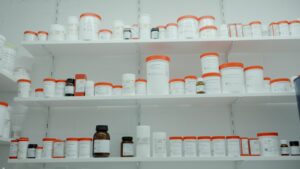Analyzing US Cancer Drug Launch Prices and Clinical Efficacy (2008-2022): Insights for Optimizing Drug Launch Analytics

alt: a bunch of pills sitting on top of a pile of money
title: Cancer Drug Pricing
SEO Meta Description:
Explore the trends in US cancer drug launch prices and their clinical efficacy from 2008 to 2022. Discover insights for optimizing drug launch analytics in the pharmaceutical industry.
Introduction
The landscape of cancer treatment in the United States has undergone significant changes over the past 15 years. A critical factor driving these changes is cancer drug pricing, which has seen substantial increases from approximately $100,000 in 2008 to $200,000 by 2022. This surge raises important questions about the relationship between drug prices and their clinical efficacy. Are higher prices justified by better patient outcomes, or do they reflect other market dynamics?
Trends in Cancer Drug Pricing
Between 2008 and 2022, the net launch prices of cancer drugs in the US have consistently risen, averaging a year-over-year increase of about 6%. This trend mirrors the broader increase in prescription drug spending in the country, which was around $1,218 per capita in 2022—about 60% higher than in other high-income nations like Canada and the UK.
Several factors contribute to this escalation:
- Advanced Research and Development (R&D): The investment in developing new cancer treatments is substantial, often driving up initial costs.
- Regulatory Pathways: Accelerated approval processes, which aim to bring drugs to market faster, can sometimes lead to higher prices due to perceived added value.
- Market Exclusivity: Patents and exclusivity periods limit competition, allowing companies to set higher prices.
Clinical Efficacy vs. Pricing
A pivotal study analyzing FDA-approved cancer drugs from 2008 to 2022 revealed a concerning disconnect between cancer drug pricing and clinical efficacy. The study assessed five metrics of clinical benefit, including overall survival (OS), progression-free survival (PFS), overall response rate (ORR), ESMO-MCBS scores, and QALY gains. The findings were striking:
- No Consistent Correlation: Higher-priced drugs did not consistently demonstrate superior clinical outcomes. In some cases, drugs with substantial PFS benefits were associated with lower launch prices.
- Certainty of Evidence: There was no significant relationship between the certainty of clinical evidence and drug prices. Drugs approved based on randomized controlled trials (RCTs) did not necessarily command higher prices.
- Value-Based Pricing Lacking: The absence of a clear link between efficacy and pricing suggests that cancer drug pricing in the US is not value-based, potentially leading to inefficient allocation of R&D investments.
Implications for the Pharmaceutical Industry
The lack of value-based pricing has broad implications:
- Economic Incentives Misaligned: Without pricing tied to clinical benefits, incentives for developing more effective treatments may be weakened.
- Healthcare Costs: Rising drug prices contribute to higher insurance premiums and out-of-pocket costs for patients, increasing the risk of medical bankruptcies, especially among those requiring expensive cancer treatments.
- Market Dynamics: High prices without corresponding efficacy improvements can distort market competition, disadvantaging innovative firms that strive to deliver meaningful patient outcomes.
Optimizing Drug Launch Analytics
Addressing these challenges requires innovative solutions in drug launch analytics. Platforms like ConformanceX are at the forefront of this transformation, offering data-driven insights and AI-enhanced tools to streamline the drug launch process. Key features include:
- Predictive Analytics: Leveraging historical data to forecast market needs and optimize launch strategies.
- Competitive Intelligence: Providing real-time market insights to benchmark against competitors and identify pricing strategies.
- Comprehensive Management Tools: Facilitating coordination and forecasting to manage timelines and budgets effectively.
By integrating these capabilities, pharmaceutical companies can make more informed decisions, ensuring that cancer drug pricing aligns with clinical efficacy and market realities.
Conclusion
The analysis of US cancer drug launch prices from 2008 to 2022 highlights a critical misalignment between drug costs and their clinical benefits. This disconnect underscores the need for more sophisticated drug launch analytics to promote value-based pricing. Embracing data-driven platforms can help pharmaceutical companies navigate the complexities of the market, ultimately leading to more efficient and effective drug launches that benefit both patients and the healthcare system.
Ready to optimize your drug launch strategy? Discover how ConformanceX can help.




